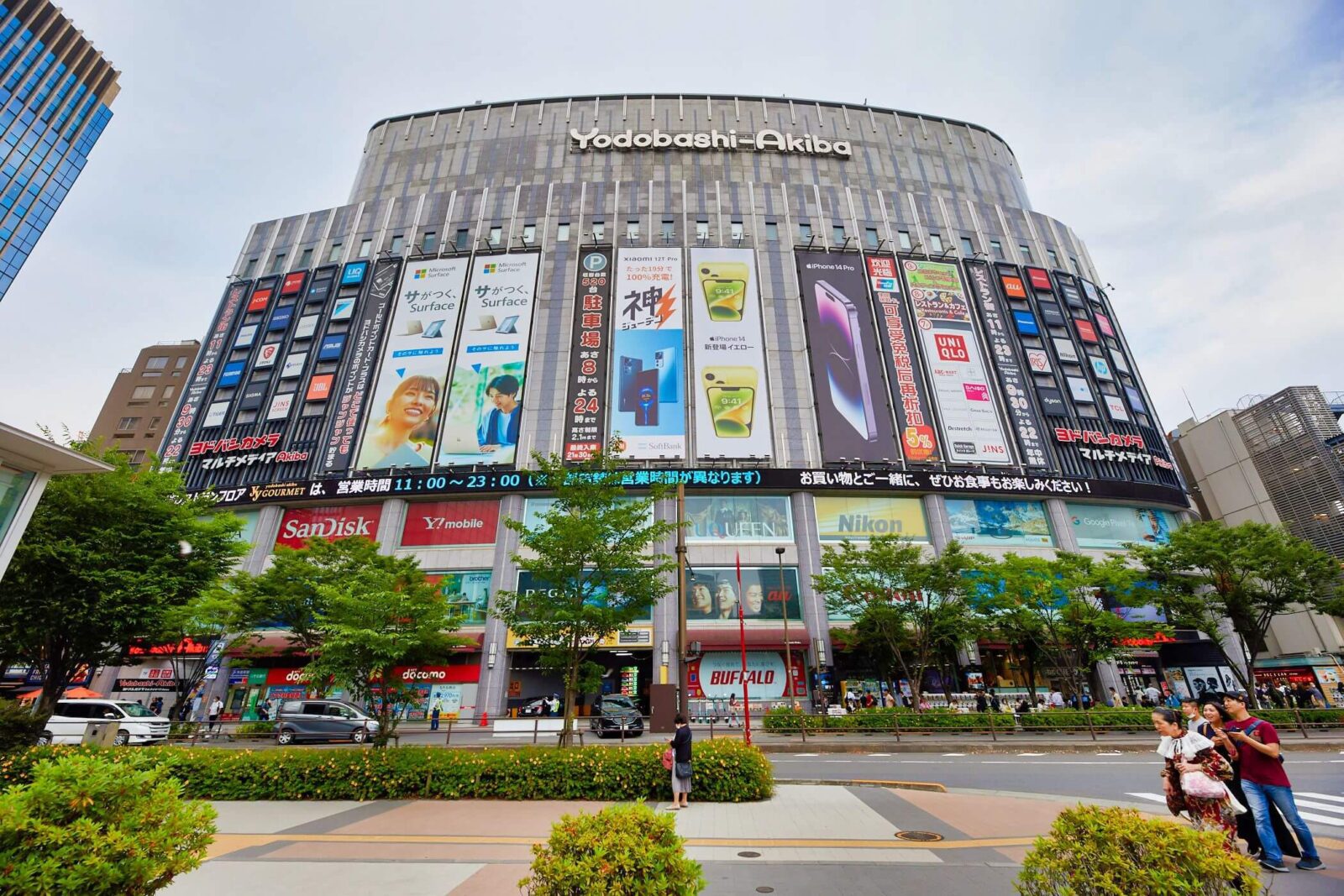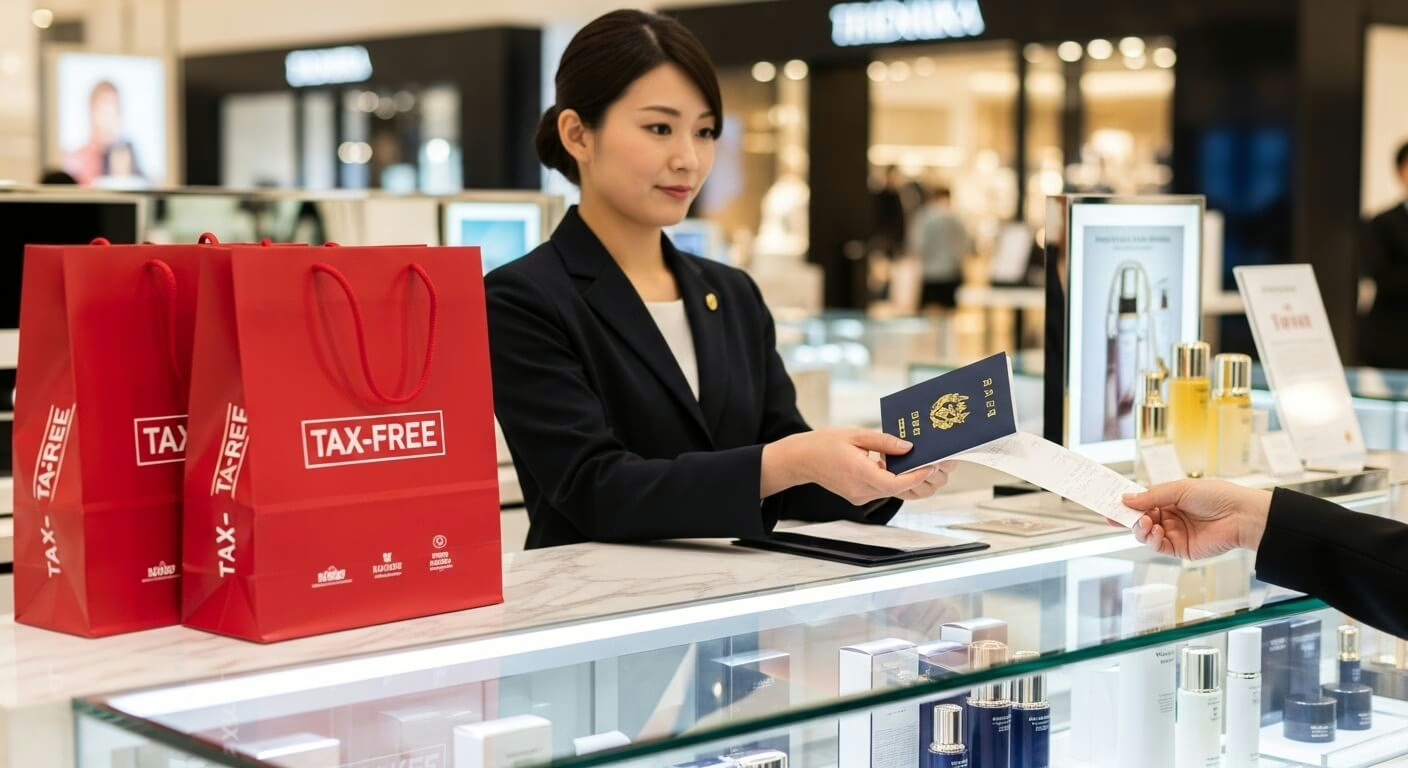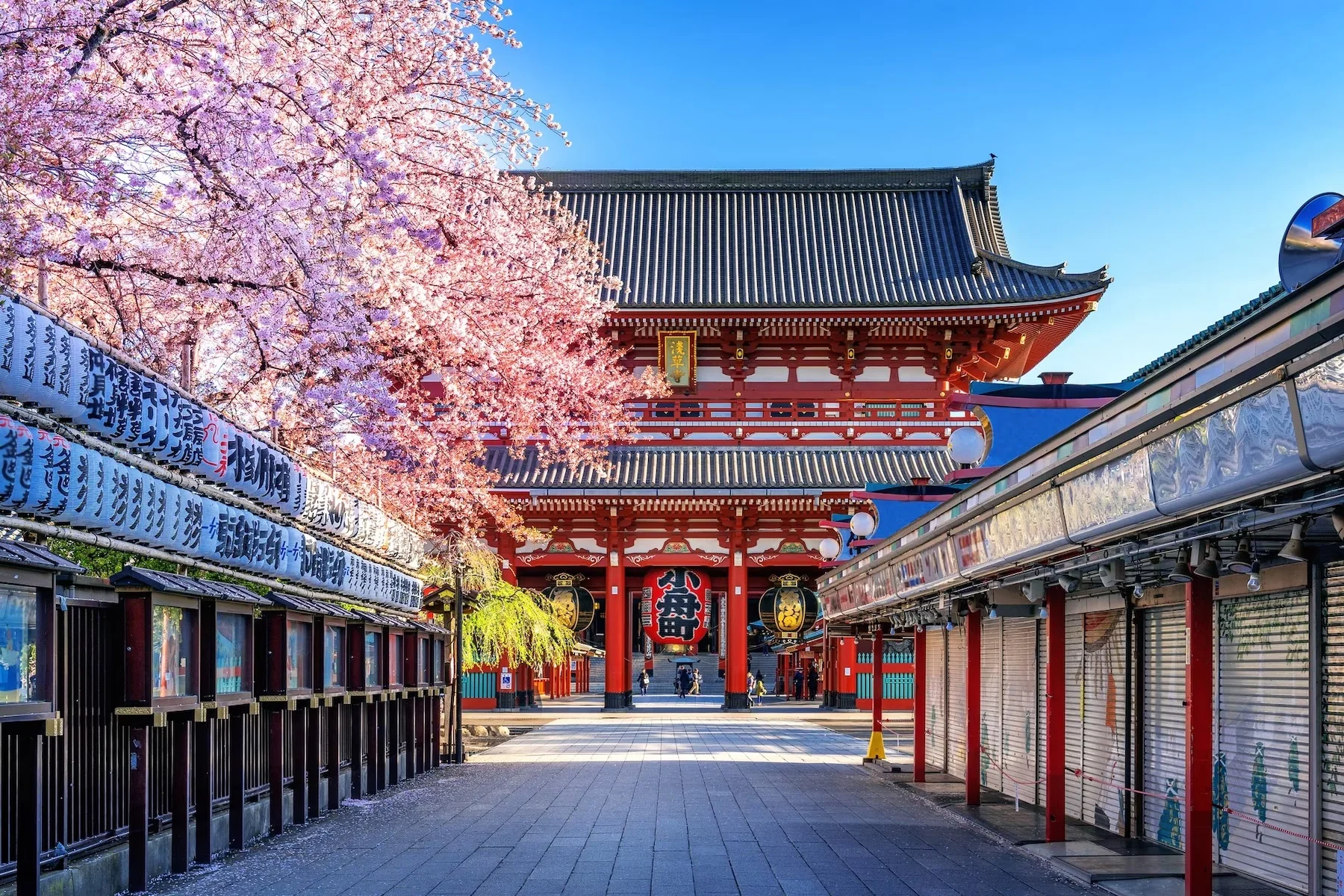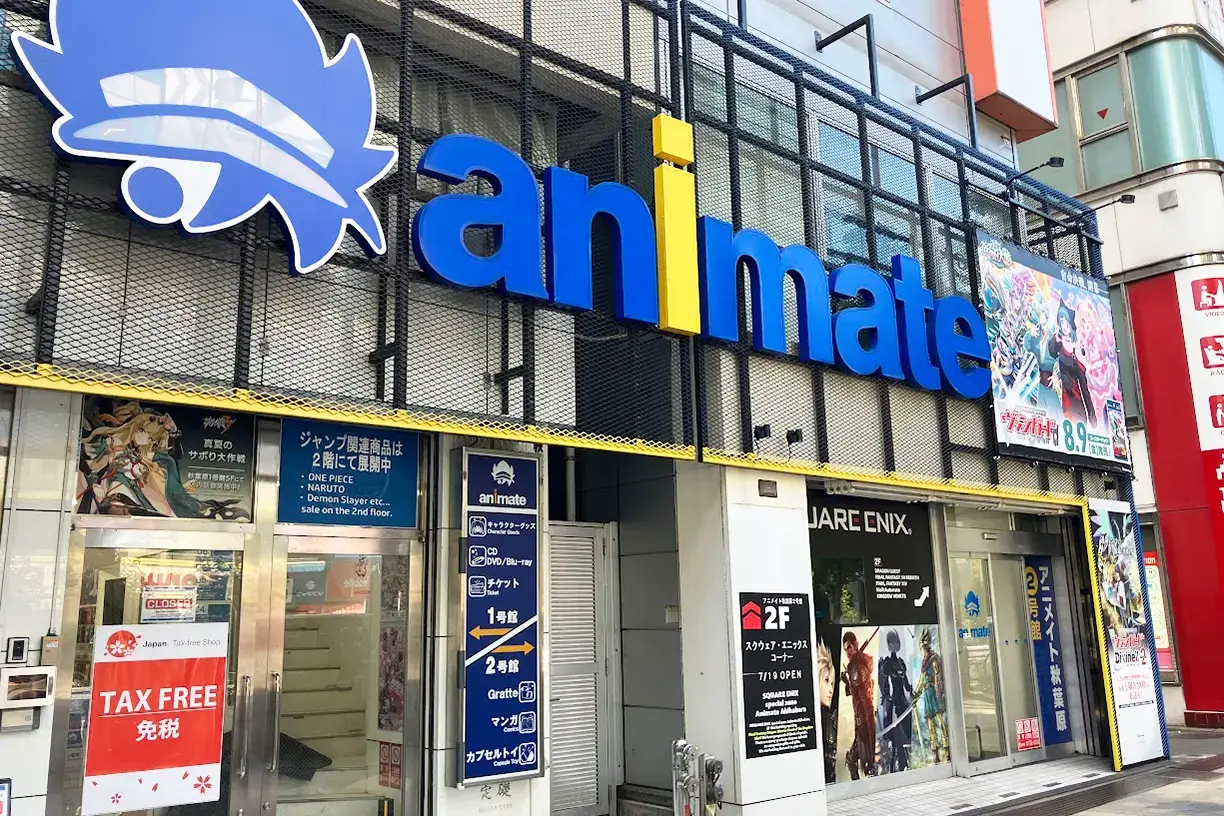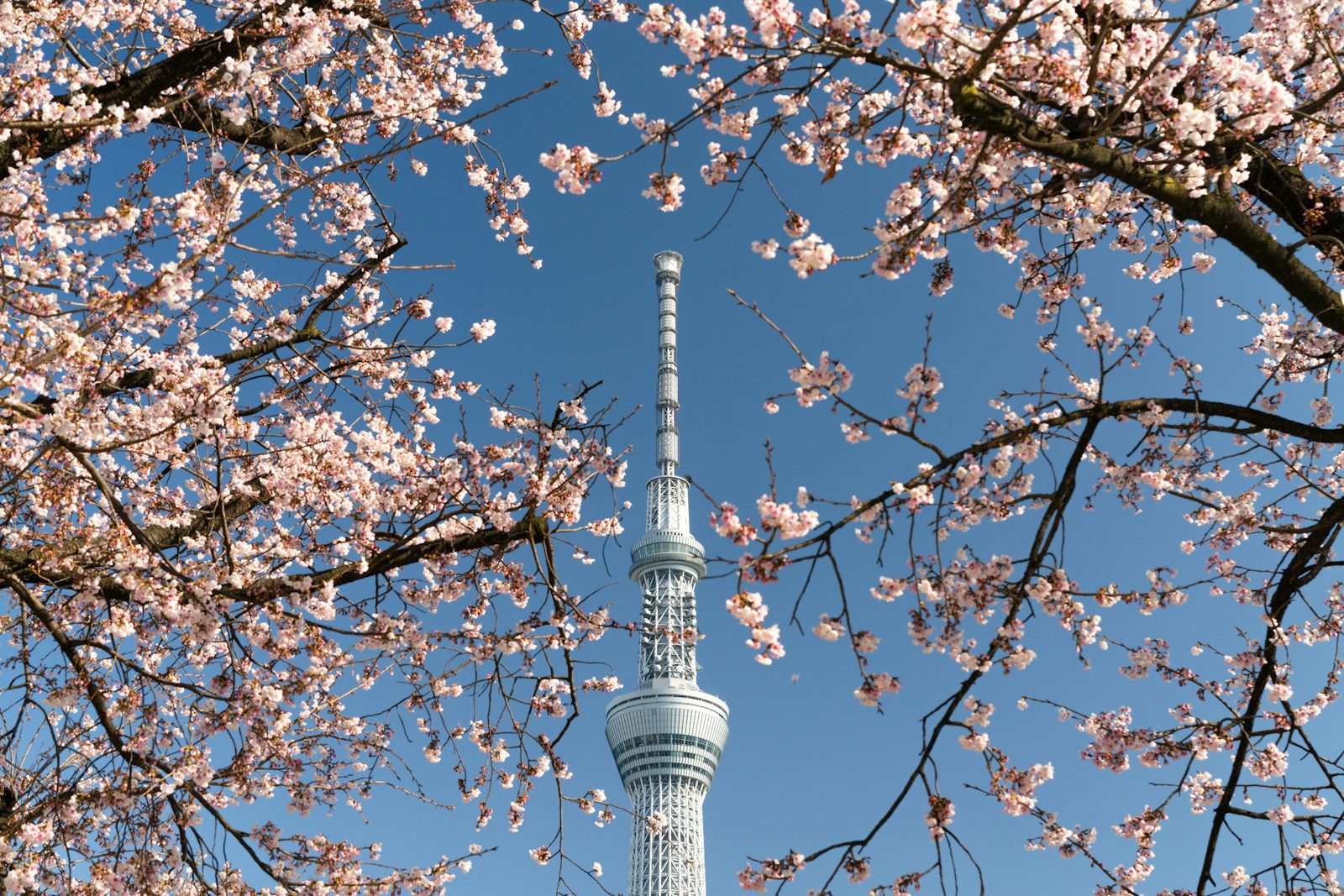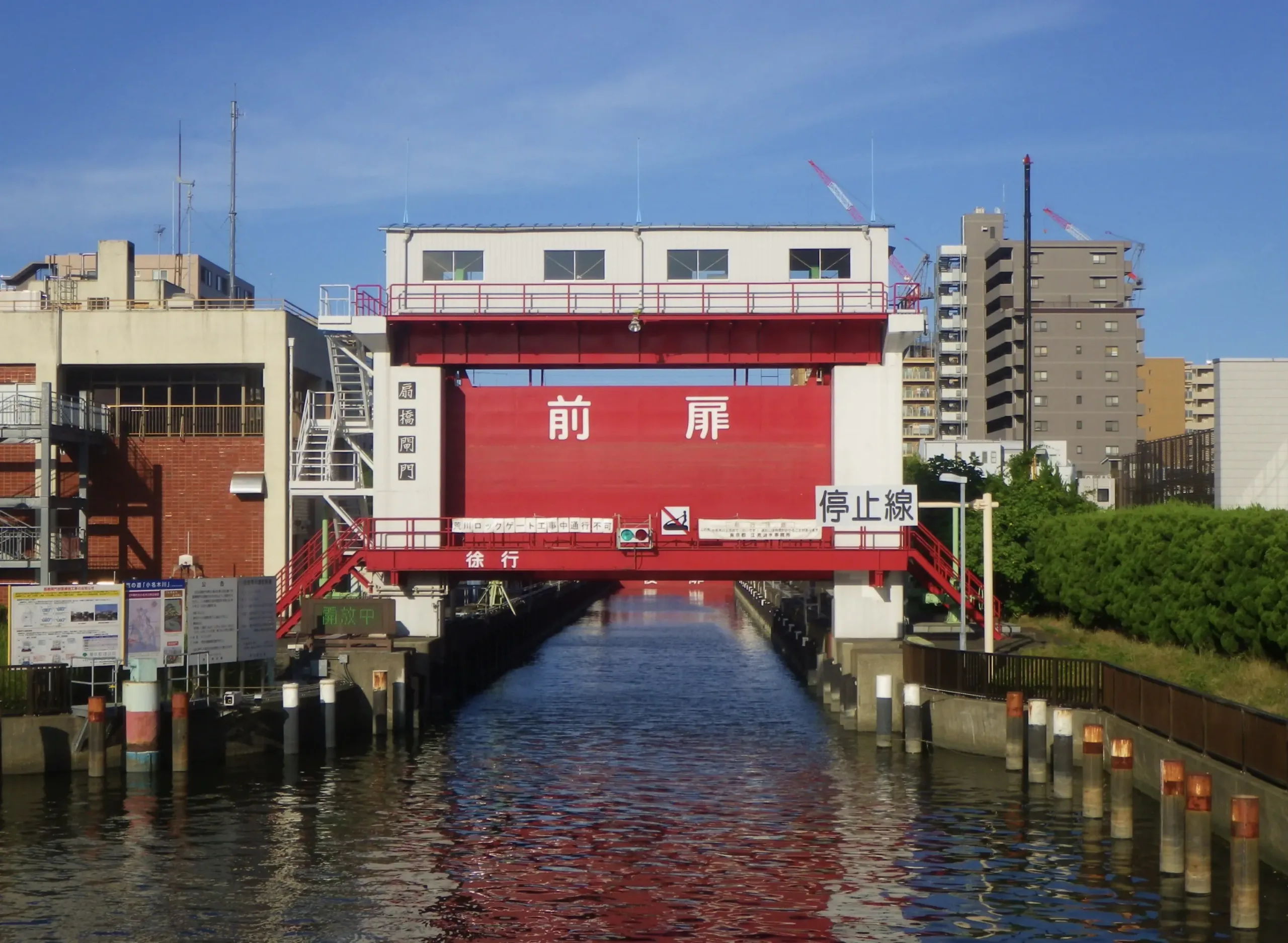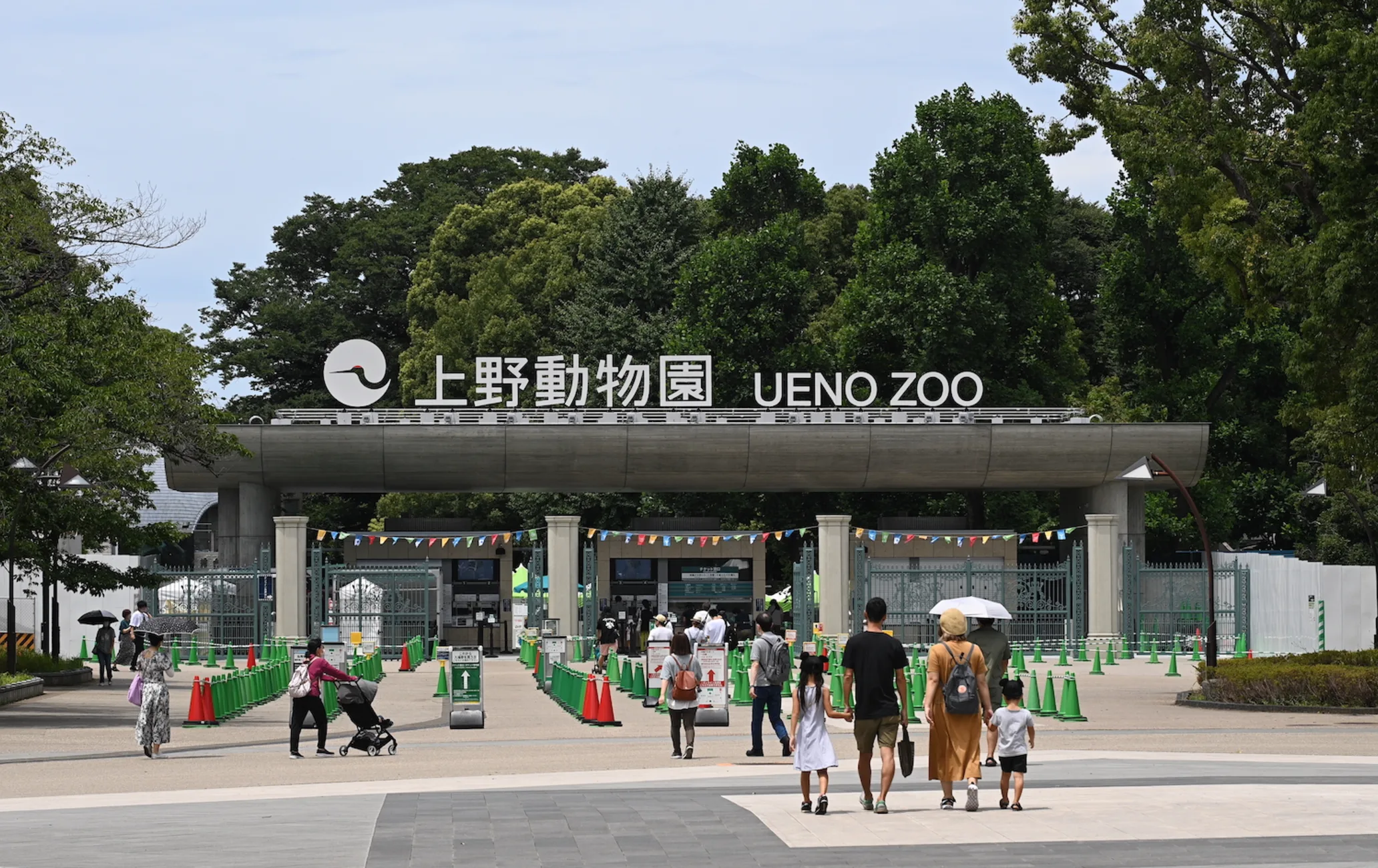Yodobashi Akiba
Massive 9-floor electronics megastore directly connected to Akihabara Station, offering everything from cameras and computers to toys, fashion, and tax-free shopping.
Overview
You are preparing to visit one of Japan’s premier electronics retailers—and potentially the most accessible shopping destination in Akihabara. Y
odobashi Akiba (formally designated Yodobashi Camera Multimedia Akiba) is a nine-story facility occupying a strategic position directly connected to Akihabara Station, allowing visitors to exit the train and proceed immediately into the retail environment without accessing street level.
The establishment extends across six of the nine floors, featuring one of the most extensive sales areas throughout the Akihabara district, and operates year-round from 9:30 AM to 10:00 PM. Visitors expecting to review the entire inventory within one hour may find their expectations unrealistic—most require a minimum of two to three hours for a cursory examination.
The distinguishing characteristic of Yodobashi Akiba compared to the smaller specialized retailers dispersed throughout Akihabara is consolidation: rather than visiting multiple separate locations for cameras, gaming systems, computers, and miscellaneous hobby materials, customers access all categories within a single facility staffed by knowledgeable personnel and offering tax-free transactions for international visitors.
Floors one through six accommodate the primary electronics categories—computers, cameras, audiovisual equipment, consumer electronics, video games, toys, bicycles, and musical instruments.
Floor seven transitions to lifestyle merchandise including casual apparel, footwear, CDs, DVDs, books, eyewear, men’s clothing, bags, and accessories, along with a travel agency and ophthalmology practice.
The upper floors contain dining establishments where patrons may refresh themselves during extended shopping visits.
The product range is extensive: specialized computer components, model trains, trading cards, collectible figures, and hobby merchandise previously unknown to many customers until encountered on display.
Yodobashi Akiba Shopping Guide: Tax-Free Electronics in Akihabara
Step off the train at Akihabara Station, and you’ll immediately spot the crimson and black facade of one of Tokyo’s most comprehensive electronics retailers.
Yodobashi Akiba stands as a nine-story monument to Japanese consumer culture, where shoppers can browse everything from vintage film cameras to AI-powered vacuum cleaners without ever seeing daylight.
This isn’t just another electronics shop—it’s where Akihabara’s chaotic energy gets organized into climate-controlled, tax-free shopping efficiency.
The store’s official name, Yodobashi Camera Multimedia Akiba, hints at its origins as a camera specialist, though that description barely scratches the surface today.
- Tokyo Souvenir Guide: Unique Gifts Beyond Tourist Traps
- Tokyo Department Store Tax-Free Shopping Made Simple
- The Complete Tokyo Taxi Guide: When to Use, How to Hail & Smart Payment Options
- Tokyo Happy Hour Guide: Best Drink Deals by Neighborhood
- Tokyo Public Transportation Day Pass: Maximum Value Guide
- Tokyo Discount Coupon Guide: Where to Find Tourist Savings
Spread across multiple floors connected to JR Akihabara Station, this retail complex has evolved into a self-contained shopping ecosystem that includes restaurants, a golf practice range, and even medical services alongside its core electronics offerings.
Akihabara Shopping: Your Complete Yodobashi Akiba Guide
Akihabara’s reputation as Tokyo’s electronics district stretches back decades, but the neighborhood’s shopping landscape has transformed dramatically since the early 2000s.
Yodobashi Akiba opened in 2005, representing a shift from the area’s traditional cluster of specialized shops toward large-format retail convenience.
The megastore quickly established itself as one of the Yodobashi Camera chain’s flagship locations, competing directly with rival Bic Camera for dominance in Japan’s competitive electronics retail market.
What distinguishes this location from Akihabara’s hundreds of smaller shops is consolidation.
Rather than navigating multiple stores across several blocks to assemble computer components, compare camera lenses, and browse gaming accessories, shoppers find everything organized under one roof with clear floor designations and multilingual staff support.
The Yodobashi vs. Bic Camera Dynamic
Both retailers operate major stores near Akihabara Station, and their ongoing price competition benefits savvy shoppers.
Bic Camera locations tend toward denser product displays and narrower aisles, creating an experience that feels more characteristically Japanese but potentially overwhelming.
Yodobashi counters with wider walkways, clearer signage, and more spacious floor layouts that international visitors typically find more navigable.
Prices between the two rarely differ dramatically—both companies monitor each other’s pricing constantly.
The deciding factors usually come down to specific product availability, current promotional campaigns, and personal preference for shopping environment.
Electronic price checkers throughout Akihabara allow quick comparisons, though most shoppers choose one store and complete their entire shopping list there rather than bouncing between locations.
Location and Access
Yodobashi Akiba occupies 1-1 Kanda Hanaokacho, Chiyoda-ku, Tokyo 101-0028, positioned for maximum transit accessibility.
The building connects directly to Akihabara Station’s Showa-dori Exit and Central Exit, creating a seamless transition from train platform to retail floor that Tokyo’s weather extremes make particularly valuable.
Multiple train lines converge at Akihabara Station, making this one of the most accessible shopping destinations in central Tokyo.
The JR Yamanote Line, JR Sobu Line, and JR Keihin-Tohoku Line all stop here, along with the Tokyo Metro Hibiya Line and Tsukuba Express.
This transit convergence explains why Yodobashi chose this specific location for one of its largest stores.
Finding the Entrance
Arriving passengers should follow signs toward the Showa-dori Exit (昭和通り口) if approaching from JR platforms.
The store’s distinctive exterior becomes visible immediately upon exiting the ticket gates.
Metro Hibiya Line passengers can use Exit 3 or Exit 4 for the shortest walk, though all exits from Akihabara Station place you within two minutes of Yodobashi’s entrance.
The building’s GPS coordinates (35.6983°N, 139.7730°E) provide precise smartphone navigation, though honestly unnecessary given the store’s prominent position and clear sight lines from the station.
Wheelchair users and those with mobility concerns will find elevator access from street level, with additional elevators throughout the building connecting all floors.
Navigating the Nine-Floor Layout
Yodobashi Akiba’s floor organization follows a logical progression from portable electronics on lower levels to lifestyle products and dining on upper floors.
Understanding this structure before entering saves considerable time and prevents the aimless wandering that leads to purchasing things you didn’t know existed (though that can be part of the fun).
First Floor: Mobile Devices and Cameras
Ground floor space dedicates itself to smartphones, mobile accessories, digital cameras, and camcorders.
The camera section reflects Yodobashi’s historical identity as a camera specialist—displays showcase current models from Canon, Nikon, Sony, Fujifilm, and Olympus alongside extensive lens collections and specialty equipment.
Film photography enthusiasts still find relevant products here, including film stock and developing supplies that mainstream retailers abandoned years ago.
Mobile phone sections cater primarily to Japanese market devices, though international models appear during promotional periods.
SIM cards and pocket WiFi rental services occupy dedicated counters, useful for travelers needing connectivity solutions.
Second Floor: Computing and Unexpected Beverages
Computer hardware, software, PC components, and gaming peripherals dominate the second floor.
Custom PC builders appreciate the motherboard, graphics card, and cooling system selections, though prices on computer components don’t always undercut online retailers as dramatically as they once did.
The floor includes a substantial liquor department—an unusual pairing that makes sense only in the context of Japanese retail category blending.
Pre-built laptops from major manufacturers line dedicated sections, with demo units available for hands-on evaluation.
Peripheral categories extend to keyboards, mice, monitors, routers, cables, and essentially every connection or accessory a computer might require.
Third Floor: Health Products and Additional Camera Equipment
Floor three splits attention between health and fitness products (activity trackers, bathroom scales, massage devices, air purifiers) and overflow camera equipment that couldn’t fit on the first floor.
Serious photographers gravitate toward this section for tripods, lighting equipment, camera bags, and specialized accessories that casual shooters skip.
The air purifier selection reflects Japanese consumers’ particular concern with indoor air quality—models feature HEPA filters, humidification functions, and sensors that detect specific pollutants or allergens.
Fourth Floor: Visual and Audio Excellence
High-definition televisions, projectors, premium audio systems, and home theater equipment fill the fourth floor.
Audiophiles lose hours comparing headphones through dedicated listening stations, while home theater enthusiasts evaluate speaker configurations in demonstration rooms designed to showcase sound quality.
This floor also houses vacuum cleaners and cleaning appliances, suggesting Yodobashi’s merchandising logic prioritizes floor space efficiency over strict category coherence.
The juxtaposition feels odd initially but becomes unremarkable after experiencing similar combinations throughout Japanese retail.
Fifth Floor: Kitchen and Home Appliances
Rice cookers occupy prominent displays on the fifth floor, ranging from basic ¥5,000 models to ¥100,000+ pressure IH cookers that promise perfectly cooked grains through advanced temperature control.
Coffee makers, blenders, toasters, electric kettles, and other countertop appliances demonstrate the Japanese market’s appreciation for specialized kitchen equipment.
Larger appliances include refrigerators, washing machines, and the high-tech toilets (washlets) that perplex and delight Western visitors.
These sophisticated toilet seats feature heated surfaces, adjustable bidet functions, air dryers, and control panels that rival aircraft cockpits in complexity.
Voltage differences mean many appliances won’t work outside Japan without transformers, but travelers still purchase them as splurge items or gifts.
Sixth Floor: Gaming, Toys, and Bicycles
The sixth floor caters to multiple enthusiast communities.
Video game sections stock current console hardware, PC gaming equipment, e-sports peripherals, and extensive software selections that include Japanese-exclusive titles.
Trading card games, action figures, model kits (plamo), and collectibles appeal to otaku culture, with limited-edition items appearing regularly.
Bicycles share this floor, including electric power-assisted models popular in Japan and conventional road bikes.
Fitness equipment and nutritional supplements round out the offerings, creating another category combination that seems random until you consider cyclist demographics.
Seventh Floor: Fashion and Services
Yodobashi Akiba expands beyond electronics on the seventh floor with clothing, shoes, bags, watches, eyeglasses, cosmetics, and skincare products.
An Apple repair counter provides service for devices needing attention, while a travel agency and ophthalmologist office add services that transform the store from simple retailer into lifestyle complex.
Books, CDs, and DVDs occupy sections near the floor’s periphery, though these categories have shrunk as digital media consumption has grown.
The remaining physical media focuses on collectible editions, limited releases, and materials appealing to serious fans rather than casual consumers.
Eighth Floor: Dining and Refreshment
Restaurant options span the eighth floor, providing refueling stations for shoppers who’ve spent hours browsing.
Ramen shops, traditional Japanese restaurants, cafes, and quick-service options ensure nobody needs to leave the building hungry.
Quality ranges from serviceable to genuinely good, with prices reflecting the captive audience but remaining reasonable by Tokyo standards.
Most restaurants operate 11:00 AM – 10:00 PM daily, aligning roughly with the store’s shopping hours.
Seating capacity handles weekday crowds comfortably but fills during weekend lunch periods.
Ninth Floor: Golf and Recreation
The top floor specializes in golf equipment, accessories, and a batting center where visitors can practice their swing.
This might seem niche, but Japan’s golf culture supports dedicated retail space even within electronics megastores.
The batting center charges ¥200-¥500 per session depending on duration and pitch speed selection.
Non-golfers typically skip this floor entirely, though the batting center attracts curious visitors looking for unusual Tokyo experiences.
Tax-Free Shopping Process
Japan’s consumption tax currently stands at 10%, and Yodobashi Akiba participates in the tax exemption program for foreign visitors.
Eligible purchases exceeding ¥5,000 qualify for immediate tax deduction when shoppers present their passport showing temporary visitor status.
The process operates more smoothly than many smaller shops attempting to accommodate foreign shoppers.
After selecting merchandise, proceed to designated tax-free counters located on multiple floors.
Staff will request your passport, verify your visa status, and deduct the consumption tax from your purchase total.
Required Documentation
Bring your original passport—photocopies, digital images, or secondary identification won’t suffice.
The passport must display your entry stamp showing temporary visitor status, typically valid for 90 days.
Some travelers report success using digital QR codes from Japan’s Visit Japan Web service, though not all locations consistently accept this alternative.
Staff will attach tax exemption documentation to your passport, creating a record that customs officers theoretically check upon departure.
Keep these documents intact until leaving Japan—removing them yourself violates the tax exemption terms.
Eligible Categories
Most products qualify for tax-free treatment, including electronics, appliances, cameras, fashion items, cosmetics, and consumables.
The ¥5,000 minimum applies per transaction, though shoppers can complete multiple separate tax-free purchases throughout a single visit.
Combining related items into one transaction sometimes yields additional bulk discounts beyond the tax savings.
Certain categories face export restrictions or special handling requirements, particularly products containing lithium batteries or valuable camera equipment.
Staff will explain any limitations during the purchase process.
Point Rewards Consideration
Japanese shoppers highly value Yodobashi’s point rewards system, earning 10% back on most purchases for future shopping.
The program requires a Japanese address to establish an account, effectively excluding tourists from full participation.
However, the tax exemption’s 10% savings approximately equals the foregone point rewards, keeping overall value competitive for foreign visitors.
Some shoppers report receiving point discounts at checkout even without formal membership when making substantial purchases.
Politely asking staff about available discounts costs nothing and occasionally yields unexpected savings.
Practical Shopping Strategies at Yodobashi Akiba
Yodobashi Akiba operates 9:30 AM – 10:00 PM every day including holidays, providing 12.5 hours of potential shopping time.
Weekday mornings between 10:00-11:00 AM experience lightest crowds, allowing relaxed browsing and better staff availability for questions.
Weekend afternoons bring peak congestion, particularly on the gaming and camera floors where enthusiast communities gather.
Evening visits after 7:00 PM see reduced crowds as shoppers disperse for dinner, though staff availability may decrease slightly during these hours.
The store’s extended hours accommodate jet-lagged travelers who find themselves wide awake at unconventional times—browsing electronics at 9:30 PM beats staring at hotel room ceilings.
Time Allocation
Focused shoppers seeking specific items can complete transactions within 30-45 minutes, particularly if they’ve researched products beforehand and know exactly which floor to visit.
Casual browsers typically spend 2-3 hours exploring multiple floors and comparing options.
Electronics enthusiasts and photography buffs easily invest 4-5+ hours evaluating equipment, especially when test-driving cameras or comparing audio equipment through listening stations.
The on-site restaurants enable extended visits without leaving for meals, which either facilitates thorough shopping or enables dangerous scope creep depending on your self-control and available budget.
Price Competitiveness Reality Check
Yodobashi’s prices generally compete well within the Japanese market, and the ongoing rivalry with Bic Camera prevents significant price disparities on mainstream items.
However, the assumption that Japanese electronics automatically cost less than Western markets doesn’t always hold true, particularly considering currency fluctuations and international shipping costs for online alternatives.
Camera equipment and Japanese-market appliances typically offer better value than purchasing equivalent items overseas.
Consumer electronics like smartphones, computers, and televisions may or may not beat your home country’s prices depending on current exchange rates and local promotions.
Conducting quick price research on specific big-ticket items before committing prevents buyer’s remorse.
When Smaller Shops Win
Akihabara’s maze of specialized shops occasionally beats Yodobashi on niche items, particularly used equipment, vintage electronics, and deeply specialized components.
The tradeoff involves language barriers, inconsistent tax-free availability, and the time investment required to locate these shops.
Most travelers find Yodobashi’s convenience and reliable service worth slightly higher prices when differences exist.
Who Benefits Most From Visiting Yodobashi Akiba
Photography enthusiasts find genuine value here, particularly those interested in Japanese camera brands, lenses, or accessories unavailable or expensive in their home markets.
The selection, staff expertise, and ability to handle equipment before purchasing surpass online shopping experiences.
Gaming and anime fans appreciate the Japanese-exclusive titles, collectibles, and hobby supplies that justify luggage space.
While not every item beats international online prices, the experience of browsing a Japanese gaming section adds cultural value beyond simple price comparison.
Electronics shoppers seeking specific Japanese market products—rice cookers, toilets, appliances designed for Japanese preferences—find comprehensive selections with staff who can explain features and compatibility concerns.
Even if you don’t purchase, seeing cutting-edge Japanese consumer technology provides insight into different market priorities and design philosophies.
When Your Time Is Better Spent Elsewhere
Travelers uninterested in electronics, shopping, or consumer culture should prioritize Tokyo’s temples, gardens, museums, and cultural experiences over spending hours in a retail environment, regardless of how well-executed that environment might be.
Yodobashi Akiba represents modern commercial Japan brilliantly, but that won’t resonate with everyone’s travel interests.
Those seeking absolute lowest prices on generic electronics might find better deals through online retailers, particularly when factoring in shipping and patience.
The store’s value proposition centers on selection, immediate availability, and shopping experience rather than rock-bottom pricing.
Accessibility and Visitor Services
Elevators connect all floors, and wheelchair-accessible facilities include dedicated toilets on each level.
English-speaking staff rotate throughout the store with particular concentration on high-traffic sections like cameras, computers, and tax-free counters.
Signage appears in Japanese, English, Chinese, and Korean, reflecting Tokyo’s international visitor demographics.
Free WiFi throughout the building enables price comparisons, product research, and photo sharing during your visit.
Restrooms on each floor maintain Japanese standards of cleanliness, important during multi-hour shopping sessions.
Seasonal Considerations When Visiting
Japan’s New Year sales (fukubukuro) in early January bring intense crowds and special promotions, with lucky bags offering mystery items at discounted prices.
Summer bonus periods in July and winter bonus periods in December coincide with major sales events when Japanese workers receive biannual bonuses and increase spending.
Foreign tourist volumes peak during cherry blossom season (late March – early April) and autumn foliage season (November), creating additional crowds but also ensuring full staff deployment and maximum tax-free counter availability.
Visitor Feedback Patterns
Reviews across platforms consistently rate Yodobashi Akiba 4.0-4.2 stars based on thousands of evaluations.
Positive feedback emphasizes organization, selection breadth, helpful multilingual staff, smooth tax-free processing, and direct station connection.
The ability to handle complete shopping lists in one location appeals particularly to visitors with limited Tokyo time.
Critical reviews typically cite overwhelming size, occasional language barriers despite English-speaking staff availability, and prices that sometimes fail to meet expectations of dramatic savings.
Some visitors express disappointment that Japanese electronics prices don’t universally undercut Western markets as they might have decades ago.
The building’s size genuinely overwhelms first-time visitors—attempting to browse every section leads to decision fatigue and sore feet.
Arriving with a general plan or priority list helps manage the experience.
Planning Your Visit Exploring Yodobashi Akiba
Check the official website at www.yodobashi.com for current promotions, though the Japanese-language interface may require translation tools.
Major sales coincide with Japanese holidays and bonus periods, while regular pricing remains competitive year-round.
Bring your passport and consider visiting during off-peak hours if crowds stress you.
Comfortable walking shoes matter more than you’d expect—the building’s nine floors add up to considerable walking distance when browsing multiple sections.
The restaurant floor provides convenient break points if you need to rest and regroup.
Download a translation app if your Japanese is limited, though staff competency in English varies by floor and individual.
Camera and computer sections typically maintain better English support than specialty areas like golf equipment or home appliances.
Beyond the Transaction at Yodobashi Akiba
Yodobashi Akiba functions as more than just a place to buy electronics—it represents contemporary Japanese retail philosophy where shopping becomes an experience rather than simply a transaction.
The building’s organization, product presentation, and service standards reflect cultural values around customer service, attention to detail, and categorical completeness that distinguish Japanese retail from Western counterparts.
Even shoppers who ultimately purchase nothing gain cultural insight by witnessing how Japanese consumers approach electronics and lifestyle products.
The sheer variety of specialized appliances, the packaging and presentation standards, and the shopping behavior of local customers all provide glimpses into everyday Japanese life that temple visits and tourist sites don’t reveal.
What will you discover on nine floors of organized chaos where golf clubs share space with gaming PCs, and coffee makers command the same retail respect as high-end cameras?
The building connects directly to Akihabara Station—step inside and find out whether your luggage can handle the temptation.
Attraction Types
Things to Know
- Wheelchair-accessible entrance
- Wheelchair-accessible toilet
- Elevators and escalators
- Tax-free counter for tourists
- English-speaking staff available
- Multiple restaurant options (8th-9th floors)
- Travel agency on-site
- Ophthalmologist office on-site
- Free WiFi (availability unclear)
- On-site parking (limited information)
Our Notes & Verdicts
Our Rating: 4.4
Yodobashi Akiba surprised us with its vast offerings. We initially planned to spend an hour there, but ended up staying for three hours.
The store’s massive size is impressive, with multiple floors dedicated to various niche hobbies, including model trains, trading cards, and cameras.
The staff spoke English and were helpful, and the tax-free counter made purchases cheaper than expected.
What stood out was how well Yodobashi Akiba functions as a single destination, allowing us to shop, eat at the restaurant level, and then continue shopping.
Its direct connection to Akihabara Station made it easy to visit multiple times during our Tokyo trip.
We compared prices elsewhere but found Yodobashi’s to be competitive. For electronics, cameras, games, or hobby supplies in Tokyo, Yodobashi Akiba should be your first stop due to its extensive selection and fair prices.
The store saves time and effort, as you don’t need to travel between different shops. Wear comfortable shoes and bring a portable charger, as you’ll likely spend more time there than planned.
🏨 Related Accommodations
-
Asakusa View Hotel
3-17-1 Nishiasakusa, Tokyo 111-8765, Japan
Not sure which hotel to select? Try these hotel search engines below
🍽️ Related Restaurants
Operating Hours
Location
Nearest Train Station(s)
JR: Akihabara Station (Showa-dori Exit or Central Exit, JR Yamanote Line, JR Sobu Line, JR Keihin-Tohoku Line, 1-minute walk or directly connected) Subway: Akihabara Station (Tokyo Metro Hibiya Line, 1-minute walk) Tsukuba Express: Akihabara Station (1-minute walk)
Nearest Bus Stop(s)
Akihabara Station Bus Stop, Kanda Myojin-mae Bus Stop
Tokyo Trip Add-Ons
Equip yourself for the ultimate Tokyo adventure with the following add-ons, curated just for you.
Frequently Asked Questions (FAQs)
Prices vary by product category and currency exchange rates. Camera equipment and Japanese-market appliances often offer better value than purchasing overseas, while generic electronics may or may not beat your home country’s prices. The 10% tax-free discount helps, but research specific items beforehand for expensive purchases.
Focused shoppers seeking specific items need 30-45 minutes, while casual browsers typically spend 2-3 hours. Electronics enthusiasts and photography fans easily invest 4-5+ hours exploring multiple floors. The on-site restaurants enable extended visits without leaving the building.
English-speaking staff work throughout the store, particularly in high-traffic sections like cameras, computers, and tax-free counters. Signage appears in multiple languages including English. Translation apps help with detailed product specifications, but basic shopping functions smoothly without Japanese language skills.
Yes, foreign visitors with temporary visitor status can receive immediate 10% tax exemption on purchases exceeding ¥5,000. Bring your original passport showing your entry stamp to designated tax-free counters located on multiple floors. Staff will handle the paperwork and deduct the consumption tax from your purchase total.
The store operates 9:30 AM – 10:00 PM daily, including all holidays and weekends. Weekday mornings (10:00-11:00 AM) experience lightest crowds, while weekend afternoons bring peak congestion. Restaurants on the eighth floor generally operate 11:00 AM – 10:00 PM with slight variations by establishment.
Disclaimer
While we at Tokyo Trip Guide do our best to show you accurate prices, we just can't promise they'll stay the same. Here's why: since we're not actually selling anything ourselves - we work with partner companies who set their own prices - we can't control what deals they offer. That's why it's best to check directly with our suggested deal providers to see their latest prices for attraction tickets.
Just so you know, if you end up buying something from the providers we list here, we might get a small commission. We'd be really happy if you used our recommended links to make your bookings!

